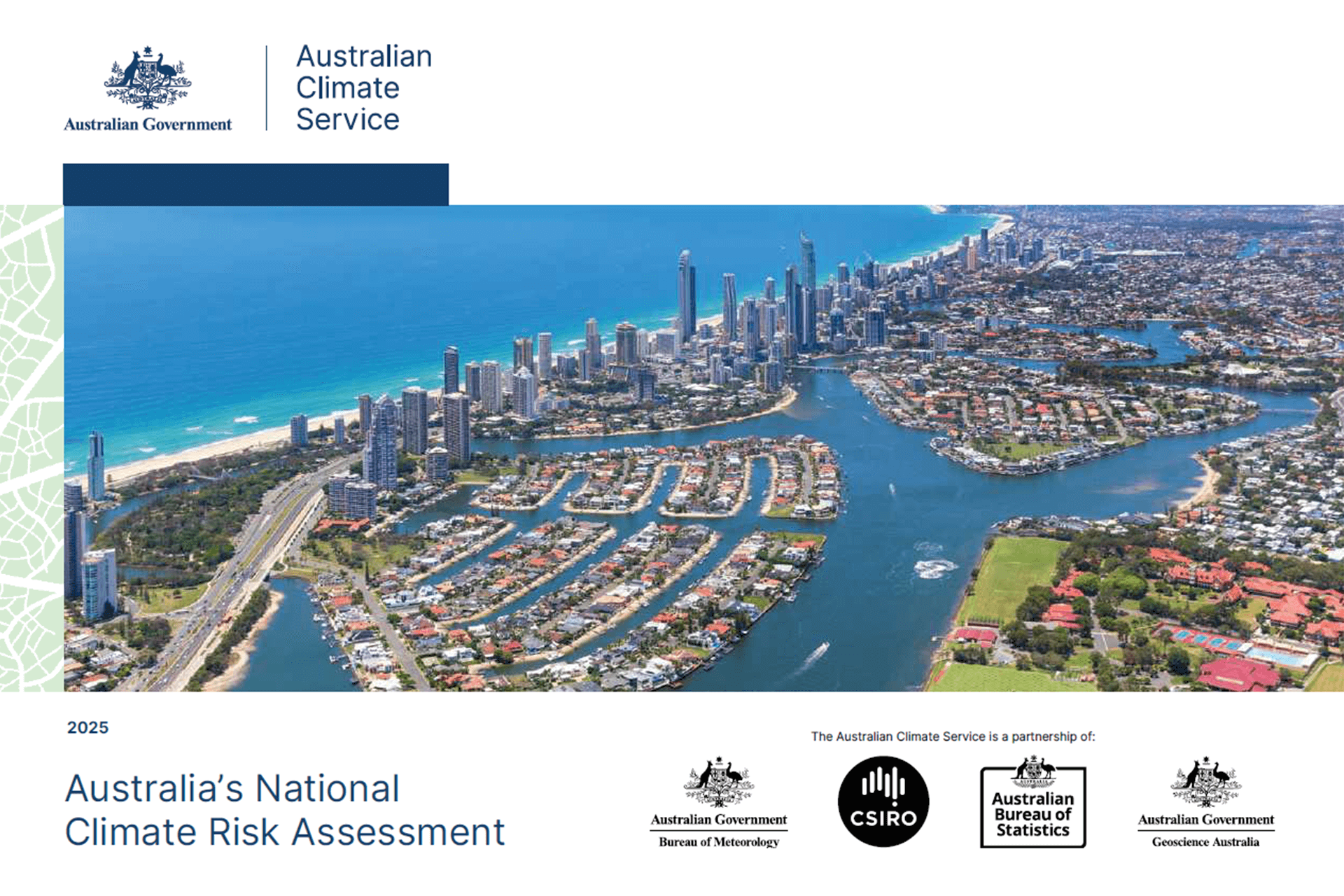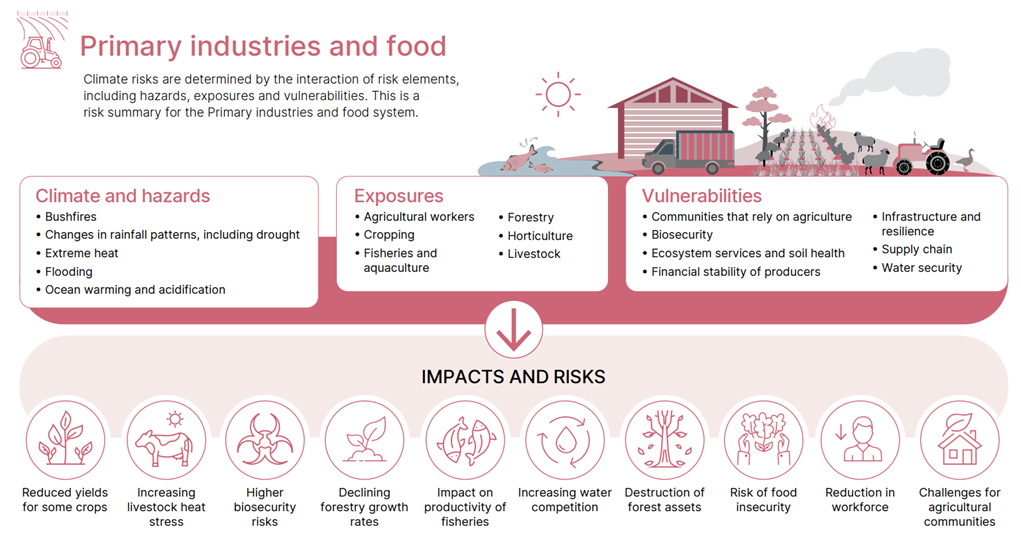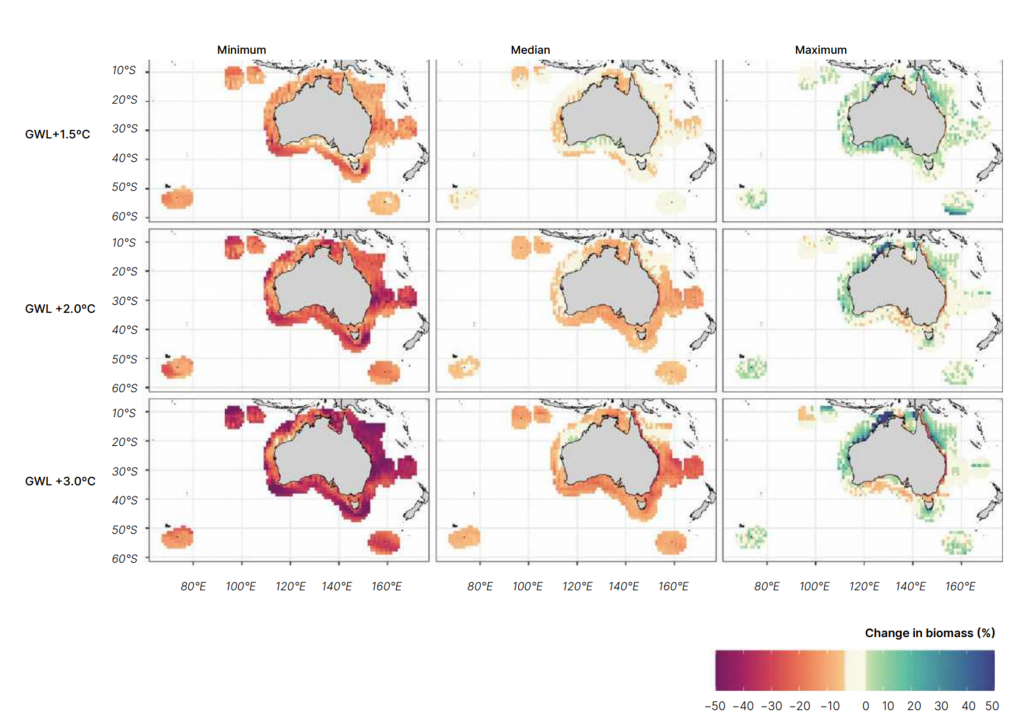Climate Risks to Australian Fisheries & Aquaculture
- News item

Summary of the key findings from the 2025 National Climate Risk Assessment
Overview
Australian fisheries and aquaculture are diverse and economically significant industries, producing over 300,000 tonnes annually with a value of $3.45 billion. Wild-catch makes up the majority of production volume, while aquaculture contributes more in value. Fisheries and aquaculture provide nutritious and relatively low carbon food and support the livelihoods of many Australians all around our coastline. Both also depend on healthy ecosystems, making them highly exposed to climate change, with impacts and risks outlined below (Figure 1).

Over the next 25 years, risks are expected to increase in severity, shifting from moderate–high to high–very high (Figure 2).

Key Findings
- Climate impacts already observed: warming and extreme events have reshaped ecosystems, caused local extinctions and mortality events, shifted species distributions, and closed fisheries and aquaculture operations.
- Major hazards: ocean warming, acidification, longer and more intense marine heatwaves, and storm damage.
- Spatial variability: productivity projected to decline in eastern and southern Australia, while increases may occur in the north-west and around Tasmania, though with high uncertainty.
- High-risk sectors: shallow coastal and estuarine fisheries (e.g. mud crabs, oysters, lobsters); Tasmanian salmon aquaculture, already near thermal limits; reef-dependent fisheries affected by coral bleaching and habitat loss (Figure 3).
- Increasing variability: all fisheries are likely to become more unpredictable, affecting production and planning.
- Socio-economic importance: In addition to the critical importance of customary fisheries, and the livelihoods of others involved in the fisheries and aquaculture industries, recreational fishing involves over 4 million Australians annually and contributes $11 billion to GDP.

Adaptation and Future Needs
- Adaptive capacity across the sector is uneven, with limited examples of effective strategies to date.
- Priority options include:
- Cross-jurisdictional coordination and market diversification
- Flexible harvest and farm management strategies
- Investment in coastal-scale climate projections and species-specific risk assessments
- Research into effectiveness of adaptation approaches, including government-supported initiatives.
- Both wild-catch and aquaculture will need to adapt to shifting ecosystems, changing fishing grounds, and evolving disease and biosecurity risks.
Takeaway
Australian fisheries and aquaculture face rising risks from climate change, with hotspots of vulnerability in the north and southeast. While opportunities may emerge in some regions, overall productivity is projected to decline, and variability and uncertainty will increase. Coordinated adaptation and innovation is essential to safeguard the sector, the communities that depend on it, and its long-term contribution to food security and the economy.
More information
The complete National Climate Risk Assessment overview and full report are available to download here: https://www.acs.gov.au/pages/national-climate-risk-assessment
The Primary Industries Technical report is available to download here: https://www.acs.gov.au/documents/5085a44135234719b64a7a4ca29dd699/about